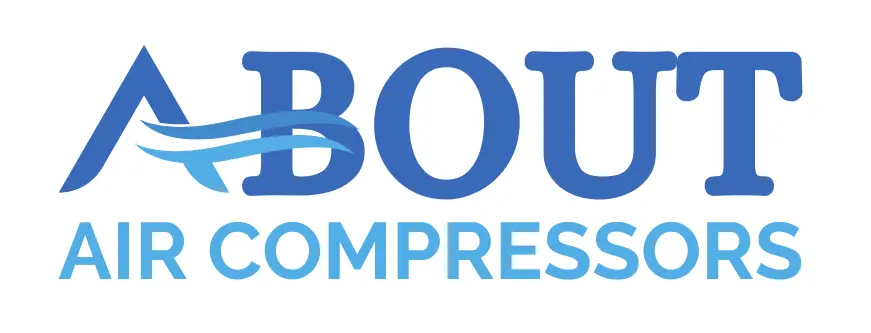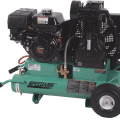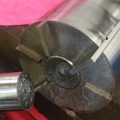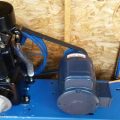Hey! This site is reader-supported and we earn commissions if you purchase products from retailers after clicking on a link from our site.
Reciprocating air compressors are powerful machines that involve a lot of individual parts/components that make up their system. Of course, from time to time, something is going to hinder the reciprocating compressor’s performance. Therefore, it is important to understand the troubleshooting steps you can take when you encounter such issues.
This article will provide examples of troubleshooting tips for a reciprocating air compressor from a popular manufacturer’s owner’s manual.
Table of Contents
- Reciprocating Air Compressor Troubleshooting Examples
- Oil-Lubricated Reciprocating Air Compressor Troubleshooting
- FAQs (Frequently Asked Questions)
- Additional Troubleshooting Pages
Reciprocating Air Compressor Troubleshooting Examples
I have picked out this manual for an Ingersoll Rand oilless reciprocating air compressor which provides tips on how to take action on various troubleshooting issues.
Though these troubleshooting tips are specifically provided by Ingersoll Rand for one of their models of reciprocating compressors, it is likely that you’ll be able to transfer this information and apply it to your reciprocating air compressor.
I will recommend reviewing your reciprocating air compressor’s owner’s manual to find the troubleshooting guidance provided by your manufacturer. If you do not have the manual, then search for it online or contact the manufacture directly.
We will take a look at the possible causes, and the correct action to take for the following symptoms:
- Motor will not start
- Starter trips repeatedly
- Tank pressure builds up slowly
- Tank pressure builds up quickly
- Discharge pressure relief valve pops off while compressor is running
- Compressor will not unload (dual control units only)
- Excessive belt wear
- Compressor runs hot
- Air leaks from unloading solenoid valve when unit is running
- System does not alternate (duplex units only)
Reciprocating Compressor Motor Will Not Start
| Possible Causes | Correct Actions |
|---|---|
| The main switch and fuses open | Check all fuses and switches. Check for loose or faulty wires. |
| Starter heater coils open | Check overload relay in the starter. Reset starter. |
| Starter tripped | Reset starter. If starter trips repeatedly have the electrical system inspected by an electrician. |
| Defective pressure switch contacts will not close | Repair or replace the pressure switch. Make sure you relieve tank pressure before servicing. |
| Low voltage | Check with a voltmeter. Be sure voltage corresponds to unit specifications. |
Reciprocating Compressor Start Trips Repeatedly
| Possible Causes | Correct Actions |
|---|---|
| Improperly adjust pressure switch | Adjust or replace. Make sure you relieve tank pressure before servicing. |
| Faulty check valve | Clean or replace. Make sure you relieve tank pressure before servicing. |
| Incorrect fuse size or magnetic starter heaters | Be sure that fuses and heaters are properly rated. |
| Low voltage | Check with a voltmeter. Be sure voltage corresponds to unit specifications. |
| Defective motor | Replace motor. |
Reciprocating Compressor Tank Pressure Builds Up Slowly
| Possible Causes | Correct Actions |
|---|---|
| Air leaks | Tighten fittings |
| Dirty air filter | Clean or replace |
| Defective compressor valves | Install new valves |
Reciprocating Compressor Tank Pressure Builds Up Quickly
| Possible Causes | Correct Actions |
|---|---|
| Excessive water in the tank | Drain the tank |
Reciprocating Compressor Discharge Pressure Relief Valve Pops Off While Compressor is Running
| Possible Causes | Correct Actions |
|---|---|
| Wrong pressure switch setting | Adjust to correct setting. |
| Defective ASME relief valve | Replace valve. Make sure you relieve tank pressure before servicing. |
Reciprocating Compressor Compressor Will Not Unload
| Possible Causes | Correct Actions |
|---|---|
| Wrong pilot valve setting | Adjust the correct setting. |
| Defective pilot valve | Replace the pilot valve. |
| Lack of air to pilot valve | Open needle valve to pilot valve. |
Reciprocating Compressor Excessive Belt Wear
| Possible Causes | Correct Actions |
|---|---|
| Pulley is out of alignment | Realign motor pulley |
| Belts too tight or too loose | Adjust belt tension |
Reciprocating Compressor Runs Hot
| Possible Causes | Correct Actions |
|---|---|
| Improper flywheel rotation | Check for correct rotation (counterclockwise when viewed from the drive side). |
| Defective compressor valves | Install new valve plate assembly. |
| Dirty air filter | Clean or replace. |
| Dirty cylinder and/or intercooler | Clean cylinder fins and/or intercooler. |
Reciprocating Compressor Air Leak From Unloading Solenoid Valve When Unit is Running
| Possible Causes | Correct Actions |
|---|---|
| Check valve stuck in an open position | Replace check valve. Make sure you relieve tank pressure before servicing. |
| Incorrect wiring of solenoid valve | Check all wiring. Check for loose or faulty wires. Check for correct voltage. |
| Defective solenoid valve | Replace the solenoid valve. |
Reciprocating Compressor System Does Not Alternate
| Possible Causes | Correct Actions |
|---|---|
| Starter tripped | Reset starter. If starter trips repeatedly have the electrical system inspected by an electrician. |
| Loose wiring in the alternator | Check and tighten all wiring connections. |
| Defective alternator | Replace alternator. |
| Defective motor | Replace motor. |
Oil-Lubricated Reciprocating Air Compressor Troubleshooting
As the example provided above focuses on an oil-less reciprocating air compressor, I would like to discuss some very common oil-lubricated reciprocating air compressor troubleshooting issues in greater detail. These issues are:
- Oil doesn’t last long enough
- Excessive oil in compressor discharge air
- Milky oil in the reservoir
Reciprocating Compressor Oil Doesn’t Last Long Enough
An oil-lubricated reciprocating air compressor needs oil to run properly. They are some situations when the oil expires too quickly. If a reciprocating compressor’s oil supply is in constant need of replacement, it’ll likely be due to the following reasons:
- Intake obstructions
- Oil leaks
- Worn piston rings
- Improper oil viscosity
Intake Obstructions
A sign of neglect is when blockage forms at the air intake. If this happens, the filter needs urgent cleaning and is some cases a replacement.
Oil Leaks
Leaks of oil can usually be stopped by tightening the bolts of relevant machine parts or by replacing the oil gasket.
Worn Piston Rings
When piston rings appear visibly worn, the time to replace them is now, not later.
Improper Oil Viscosity
If the oil viscosity is off, then it’s time to drain and refill with different oil and with the right viscosity.
Oil can also be lost if the reciprocating compressor is constantly tilting. This can be fixed by placing the reciprocating compressor on a different surface with the addition of vibration pads. Another thing, if you find the cylinder is scored, it needs to be replaced.
Excessive Oil in Reciprocating Compressor Discharge Air
Pneumatic tools and accessories can become damaged when excess amounts of oil become aerosolized by the reciprocating compressor’s discharge. Even worse than this, oily discharge poses ill effects on all applications, potentially to the point where projects must be scrapped and reworked entirely.
It may be easy on occasion to identify the problem and provide a solution. Typically oily discharge is down to the following reasons:
- Expired piston rings
- Inverted piston rings
- Restricted intake
- Overfilled oil tank
- Wrong oil viscosity
Expired Piston Rings
Just as with oil leaks, oily discharge can stem from worn piston rings, which need to be replaced on a periodic basis.
Inverted Piston Rings
Upside-down piston rings are a possible cause of oil discharge, which could mean that it’s time to replace the crankshaft.
Restricted Intake
Oily discharge is often caused by restrictions on the reciprocating compressor’s air intake. In cases such as these, the air filters either need to be cleaned or replaced altogether.
Overfilled Oil Tank
If the reciprocating compressor has too much oil, some of this excess can seep into the discharge rather easily. The oil level needs to be lowered to the right level. Visit our Air Compressor Oil Capacity Guide – Air Compressor Oil Levels for more information!
Wrong Oil Viscosity
If the viscosity doesn’t match the requirements of your reciprocating air compressor, you should empty the oil tank and refill it with a more suitable viscosity oil.
If you are using compressed air to complete spray painting, sanding, or any other finishing task, proper air treatment is absolutely crucial to ensure that no aerosolized oil is entering your airstream. With suitable preventative maintenance, you’ll be able to greatly reduce the risk of having projects ruined by the interference of oil particulates in your jobs.
For more information on preventative maintenance, visit our Air Compressor Maintenance – How to Guide – Preventative & Ongoing & Reciprocating Air Compressor Maintenance Guide!
Milky Oil in the Reciprocating Compressor Reservoir
When reciprocating compressor oil becomes a milky color, water has managed to make its way into the reservoir via condensation. This would be indicated that operating conditions have been too hot for the reciprocating compressor.
A couple of actions you can take are:
- Colder Air – Move the pipe air itnake to an area where ambient temperature is at a lower level
- Daily Drainage – Regardless of whether condensation has occured slowly oor rapidaly inside the reciprocating compressor, the tank should be drained after each day’s usage. Visit our How Often To Drain Air Compressor Tank guide for more information!
Oil is the lifeblood of most pieces of machinery. As such, instances of off-color oil inside your reciprocating compressor should be a major worry. After all, if the oil is failing to do its job properly, internal moving parts could cause friction and corrode, which could ultimately lead to costly maintenance or a shorter life for the reciprocating compressor.
Therefore, if oil problems get out of hand, it is strongly recommended to have your reciprocating compressor serviced by trained professionals.
FAQs (Frequently Asked Questions)
Typically the most common reason behind a reciprocating compressor’s inability to reach sufficient pressure is a defective reed valve. If your machine is struggling around 30-70 PSI, this may be an indicator of a problem with the reed valve releasing air out of the discharge and not keeping it within the cylinders. The reed valve can be found on the top of each cylinder. To replace the valve, loosen the cap screws, remove, disassemble, replace the reed valves and gaskets and reattach the head plates to the cylinder!
When the air pressure inside the compressor’s tank reaches the pressure switch’s cut-out pressure, the pressure switch automatically trips off and blocks the power supply to the motor. This process causes the unloader valve to open and release the accumulated compressed air. When the reciprocating compressor tank pressure drops back down to the predetermined setting on the pressure switch, it causes the switch to trip again in the opposite direction. This action results in the release of the unloader valve’s pin, preventing the escape of compressed air out the unloader valve and into the atmosphere.
Additional Troubleshooting Pages
Air Compressor Types Troubleshooting
- Centrifugal Air Compressor Troubleshooting
- Rotary Vane Air Compressor Troubleshooting
- Rotary Screw Air Compressor Troubleshooting
- Scroll Air Compressor Troubleshooting
Air Compressor Part Specific Troubleshooting
- Air Compressor Troubleshooting, Solutions, Common Problems & Causes
- Air Compressor Check Valve Troubleshooting
- Air Compressor Electrical Troubleshooting
- Air Compressor Pressure Regulator Troubleshooting
- Air Compressor Pressure Switch Troubleshooting
- Air Compressor Reed Valve Troubleshooting
- Air Compressor Smells Like It’s Burning? Troubleshooting Compressor Burning Smell
If you have any questions regarding reciprocating air compressor troubleshooting, please leave a comment below, with a photo if applicable, so that someone can help you!





